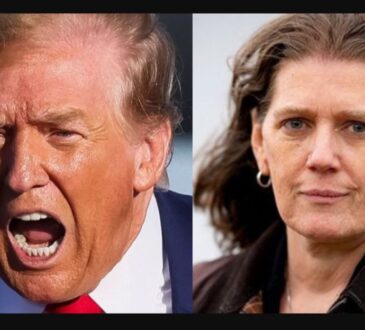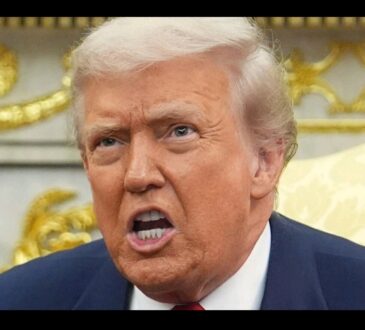Donald Trump Returned to Hospital for More Heart Tests 3 Months After Diagnosis, Physician Reveals

President Donald Trump, who is 79 years old, went through another full medical examination on Friday morning. The checkup included receiving the newest flu and COVID-19 vaccines to help keep him protected through the upcoming winter season. Even though the White House had already said earlier this year that Trump had completed his annual physical, the president made another visit to Walter Reed Medical Center on October 10 for what officials described as a “routine yearly checkup.”
According to the White House, Trump’s visit was not the result of any sudden illness or emergency. It was described as part of his “ongoing health maintenance plan,” which includes a series of detailed tests and preventive screenings to monitor his health as he continues to lead a demanding schedule. White House physician Dr. Sean Barbabella explained that Trump underwent “advanced imaging,” lab work, and other preventive health assessments designed to ensure that his heart and other vital systems remain in top condition.
Dr. Barbabella noted that all of the president’s test results came back strong. He highlighted that Trump’s “cardiac age” — a measure of how healthy his heart is compared to someone’s actual age — is around 14 years younger than his real age. This means that, based on his heart health, Trump’s cardiovascular system is closer to that of someone in their mid-60s rather than nearly 80. The doctor said this is a very positive sign and reflects Trump’s focus on keeping himself in good shape for his age.
The physician also said Trump remains in “exceptional health,” showing strong cardiovascular, lung, neurological, and overall physical performance. Despite his age, he continues to work long hours, hold meetings, travel frequently, and attend public events without any restrictions. The White House emphasized that Trump maintains a fast-paced routine and that his energy level remains high.
During the visit, Trump also received updated booster shots for both influenza and COVID-19. These vaccines are part of the government’s recommended health precautions for older adults, especially those who meet and interact with large numbers of people, as the president does.
Over the decades, presidential health reports have become a long-standing American tradition. Since the time of Richard Nixon, the White House has released summaries of each president’s yearly physical exam to show transparency and reassure the public that the commander in chief is capable of performing the duties of the office. However, these reports have sometimes sparked debate and speculation — especially when the president’s age becomes a public concern, as has been the case with Trump.
Trump had his official annual checkup back in April, where Dr. Barbabella also declared him “fully fit” for duty. That earlier report stated that Trump showed strong heart health, healthy lung function, and good neurological and physical ability.
In July, Trump made an unexpected return visit to his doctor after some observers noticed swelling in his lower legs. The doctor ran tests and diagnosed him with chronic venous insufficiency, a condition that affects blood flow in the veins of the legs. It happens when the veins are unable to efficiently return blood to the heart, which can cause swelling or discomfort. According to Dr. Barbabella, this is a common and harmless condition, especially among people over 70. He emphasized that the condition is easily managed and does not interfere with Trump’s overall health or mobility.
In addition to these health updates, Trump has also been the subject of speculation about a bruise that often appears on his right hand. He has frequently tried to cover it with makeup during public appearances, but the mark has been noticed in photographs taken throughout the year. When reporters asked about it earlier, White House press secretary Karoline Leavitt explained that the bruising comes from Trump’s constant handshaking during daily events and from taking aspirin, which can thin the blood and make bruises appear more easily.
Dr. Barbabella later confirmed that explanation in a formal note, saying the bruise was consistent with “minor soft tissue irritation” from frequent handshakes and aspirin use, part of a normal heart-health routine. He stressed that there is nothing medically serious about it.
Overall, the latest summary of the president’s physical exam paints a picture of an older but active and energetic leader. Despite occasional minor health concerns that come naturally with age, Trump’s medical team continues to describe him as being in “excellent health.” He reportedly keeps a demanding daily schedule, including early mornings, long meetings, and frequent travel, without showing signs of fatigue or restriction.
Dr. Barbabella concluded his report by saying that the president’s ongoing health monitoring plan will continue throughout the year. This includes periodic testing and preventive care to ensure that Trump remains fit for the challenges of the presidency. The White House has emphasized that these checkups are simply part of being proactive about the president’s well-being, not a response to any crisis.
In short, Trump’s latest physical exam confirms that he remains strong, active, and in good overall health, with no medical issues preventing him from fulfilling his duties as president.




